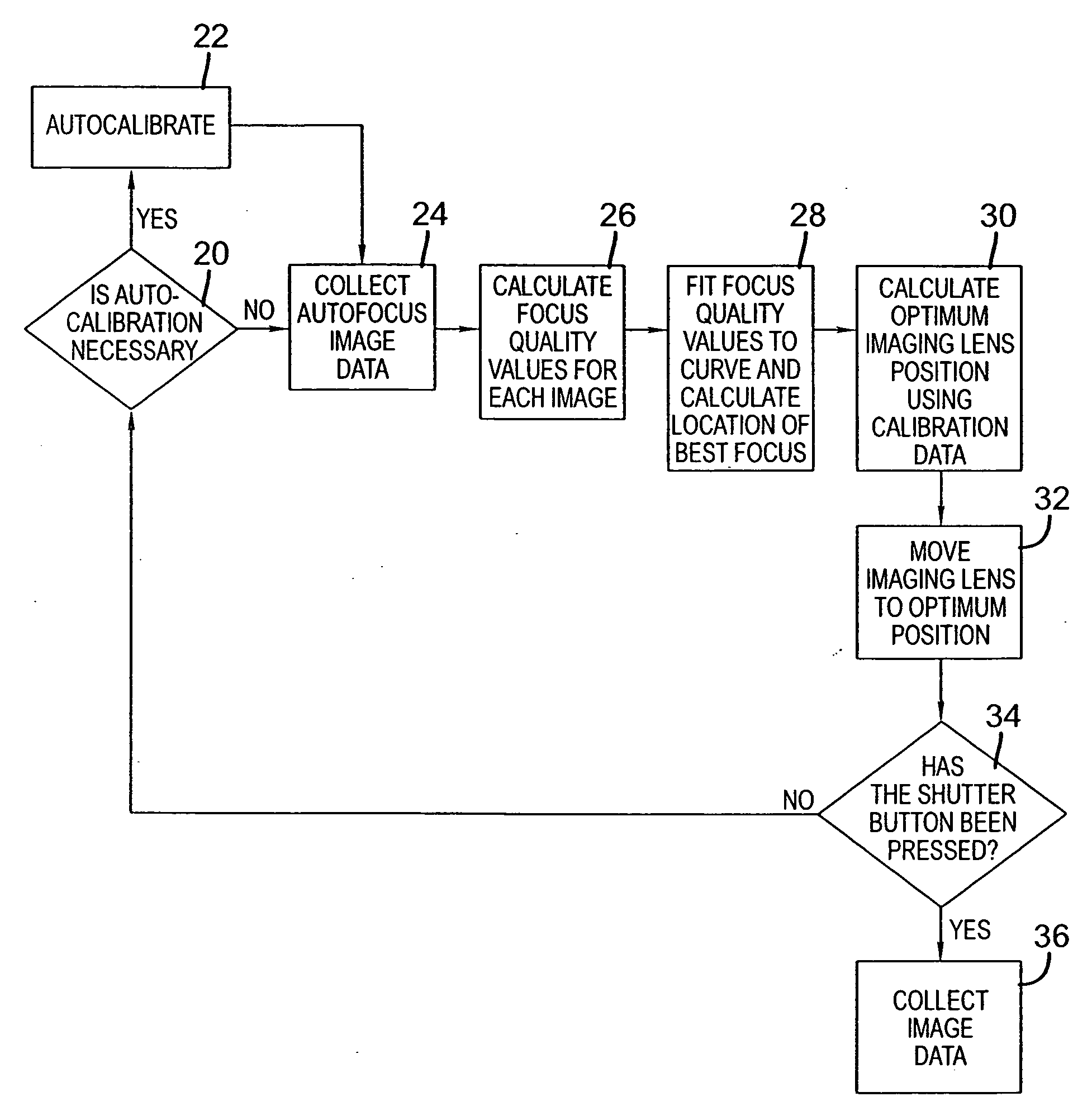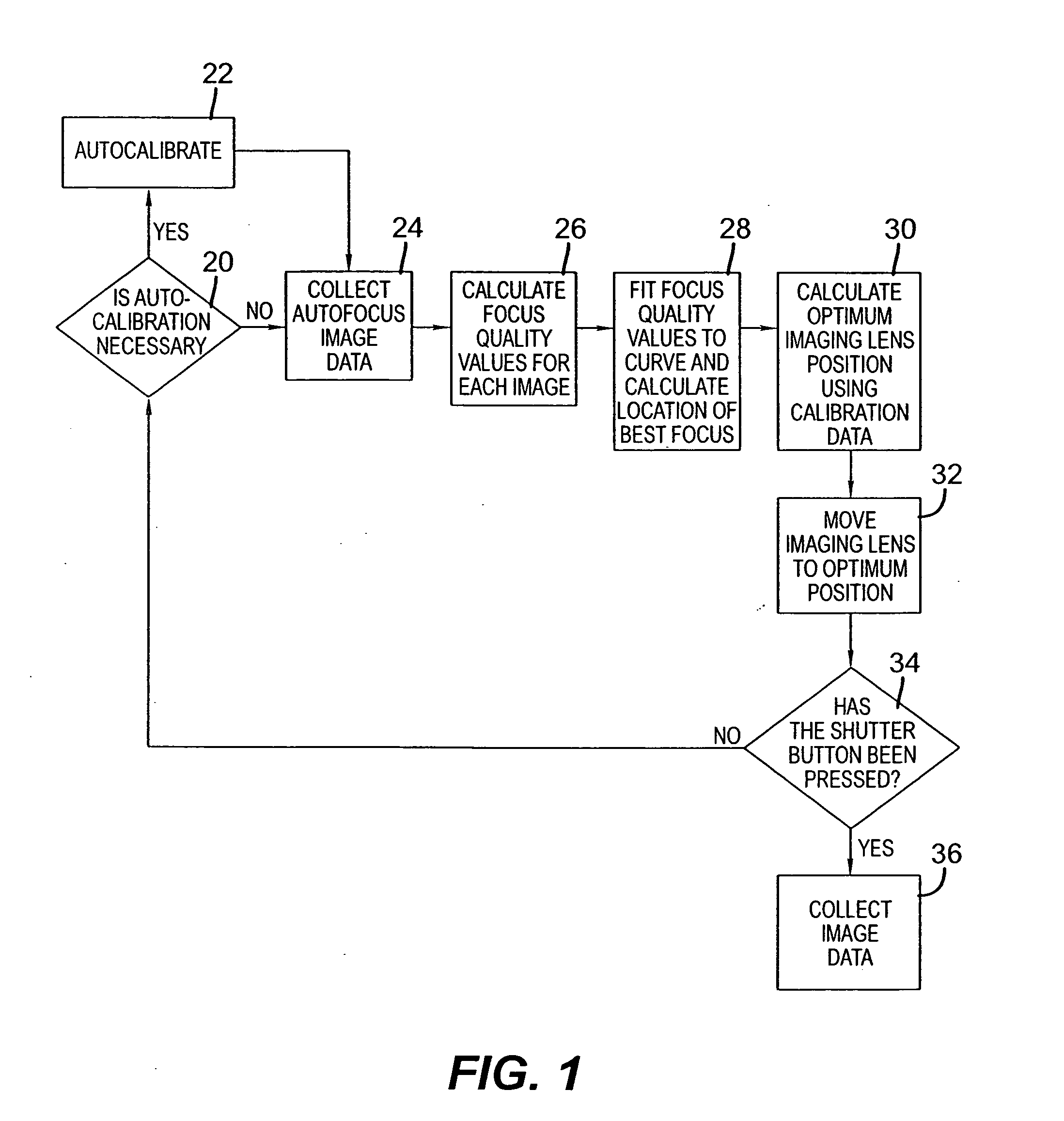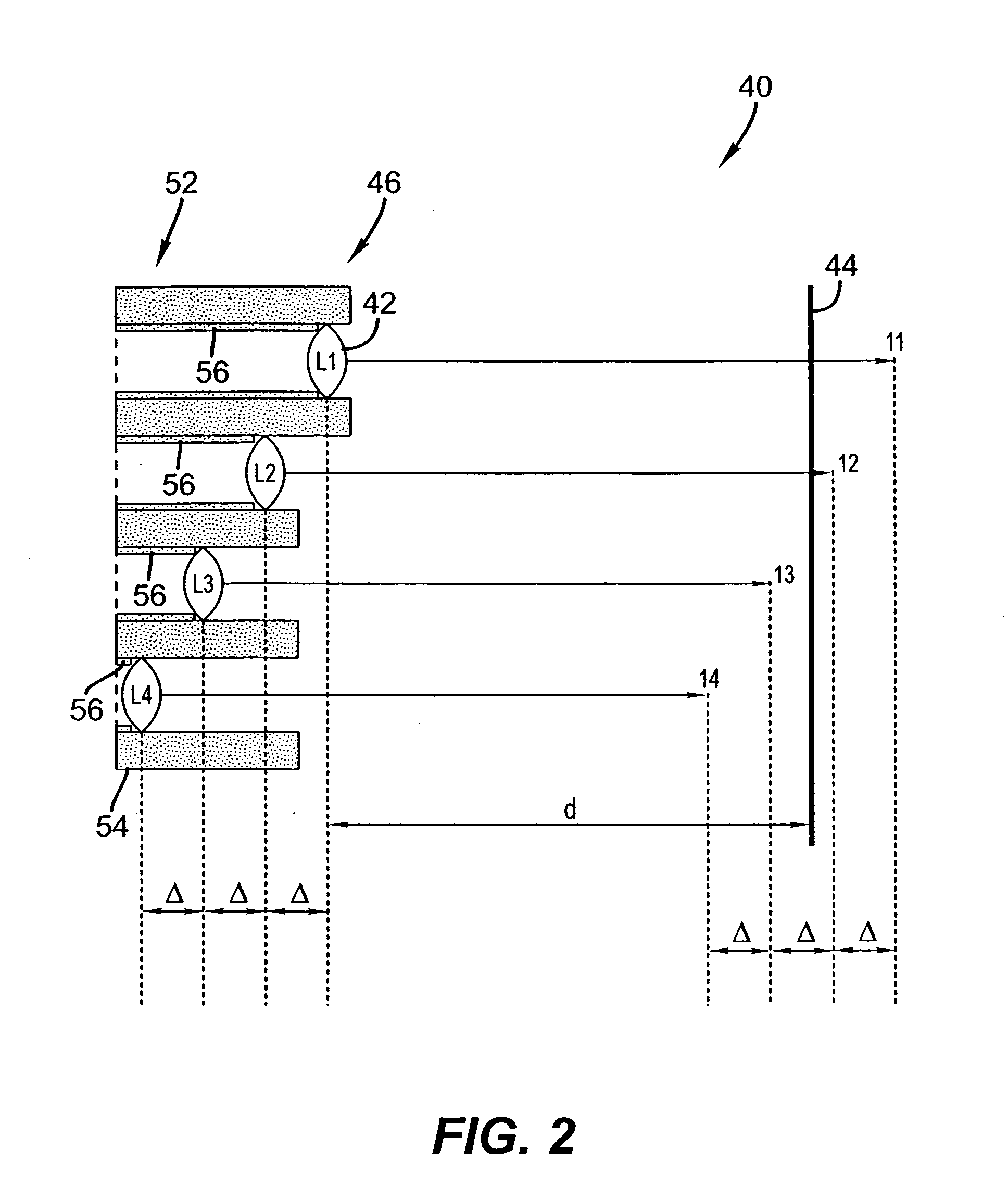Lens array assisted focus detection
a technology of lens array and focus detection, applied in the field of lens array, can solve the problems of difficult low light situations, poor hill-climbing autofocus system work, and very slow technique, and achieve the effects of small field of view, low resolution, and low cos
- Summary
- Abstract
- Description
- Claims
- Application Information
AI Technical Summary
Benefits of technology
Problems solved by technology
Method used
Image
Examples
Embodiment Construction
[0036]The present description will be directed in particular to elements forming part of, or cooperating more directly with, apparatus in accordance with the present invention. It is to be understood that elements not specifically shown or described may take various forms well known to those skilled in the art.
[0037]Referring to FIG. 1, a block diagram illustrating the basic sequence of events involved in autofocusing as it relates to the present invention is shown. Generally described, a method of detecting focus includes providing a plurality of images on a first image sensor by causing light to pass through a plurality of lenslets, each of the plurality of lenslets having a distinct conjugate length; determining relative focus quality by comparing the plurality of images to each other; and adjusting a distance between a taking lens and a second image sensor, the distance corresponding to a functional relationship between the conjugate lengths of the plurality of lenslets and the ...
PUM
 Login to View More
Login to View More Abstract
Description
Claims
Application Information
 Login to View More
Login to View More - R&D
- Intellectual Property
- Life Sciences
- Materials
- Tech Scout
- Unparalleled Data Quality
- Higher Quality Content
- 60% Fewer Hallucinations
Browse by: Latest US Patents, China's latest patents, Technical Efficacy Thesaurus, Application Domain, Technology Topic, Popular Technical Reports.
© 2025 PatSnap. All rights reserved.Legal|Privacy policy|Modern Slavery Act Transparency Statement|Sitemap|About US| Contact US: help@patsnap.com



